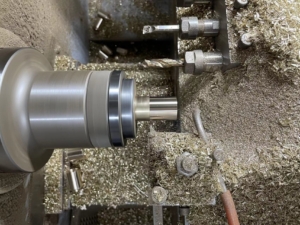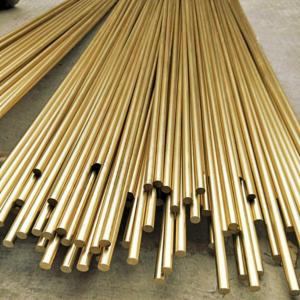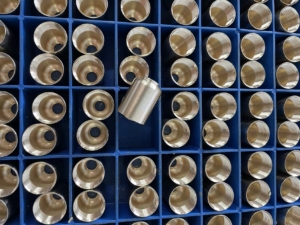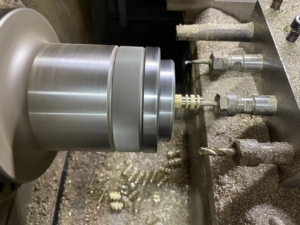A Complete Guide For Brass CNC Machining
CNC machining has revolutionized manufacturing by providing precise and efficient production processes. Brass is a popular alloy known for its excellent corrosion resistance and electrical conductivity and is widely used in various industries including automotive, electronics and plumbing. In this article, we’ll provide a comprehensive guide to CNC machining of brass, covering the basics, tool requirements, machining parameters, and finishing techniques.

Types of Brass Grades Used for CNC Machining
Brass is an alloy composed primarily of copper and zinc, with varying amounts of other elements such as lead, tin, and aluminum. It is a relatively soft and malleable material, making it easy to work with. The types of brass commonly used for CNC machining include the following:

1,Brass C360
C360 brass is a common brass alloy that has many advantages and some disadvantages.C360 brass has good corrosion resistance, processability and mechanical properties, and has a wide range of uses in suitable applications. However, there are limitations on lead content and high temperature conditions that need to be considered when using them.
advantage:
- Good corrosion resistance: C360 brass has high corrosion resistance and can resist the corrosion of most non-oxidizing acids, alkali and salts, so it is widely used in the field of manufacturing corrosion-resistant equipment and pipelines.
- Excellent processing performance: C360 brass is easy to process and form, so it is widely used in the manufacture of precision mechanical parts, such as bolts, nuts, bearings, etc.
- Good mechanical properties: C360 brass has high strength, stiffness and impact toughness, so it performs well in applications with high strength and impact load resistance.
- Good thermal conductivity: C360 brass has good thermal conductivity and is suitable for manufacturing radiators, heat exchangers and thermal conductive media, and can conduct heat quickly
disadvantage:
- High-quality C360 brass contains high lead content, which may have certain effects on the environment and human health. Therefore, in some applications, alternative materials need to be considered.
- Parts made of C360 brass have thermal brittleness problems in high temperature environments and are prone to brittle fracture. Therefore, it is not suitable for use under high temperature conditions.

2,Brass C370
advantage:
- Excellent mechanical properties: Brass C370 has high toughness and plasticity, and is easy to process and form. It can be cold formed, forged and welded.
- Corrosion resistance: Brass C370 has good corrosion resistance and has certain resistance to oxidation, acid, salt solution and water in general environments.
- Lower density: Compared to some other metal alloys, Brass C370 has a relatively low density, making parts and products relatively lightweight.
- Good thermal conductivity: Brass C370 has good thermal conductivity and can provide reliable performance in heat conduction.
disadvantage:
- Easily oxidized and discolored: Brass C370 is easily oxidized when exposed to air and moisture, forming an oxide film, resulting in discoloration of the appearance.
- Low corrosion resistance: The copper content in Brass C370 is higher, and its corrosion resistance is lower than some other brass alloys.
- Low plasticity strength: Compared with some other metal alloys, Brass C370 has lower plasticity strength and may not be suitable for certain high-strength applications.
Tooling requirements:
When selecting tools for CNC machining, there are several factors to consider:
- Material type: The processing of different materials requires the use of different types of tools. Common materials include metal, plastic, wood, etc. Each material has different requirements for cutting tools.
- Processing type: Select the appropriate tool according to the required processing type. For example, milling, turning, drilling, boring, etc. Each type of processing requires different tools to complete.
- Processing size: Select the appropriate tool according to the required processing size. Smaller machining sizes typically require the use of smaller tools, while larger sizes require the use of larger tools.
- Cutting speed: Select the tool according to the required cutting speed. Different types of cutting tools have different maximum cutting speeds, and cutting speeds that are too high or too low will have a negative impact on the machining effect.
- Accuracy requirements: Select the tool according to the required accuracy requirements. If you need high-precision machining results, you need to choose a tool with better rigidity and precision.
- Life and cost: Consider tool life and cost factors. The life of the tool can be judged based on different materials and processing types, while the cost and maintenance costs of the tool should also be considered.
Factors that determine processing parameters:
Determining the optimal machining parameters is critical to achieving the quality and productivity required for CNC machining of brass. The following factors are mainly considered:
- Cutting speed: Brass has a low thermal conductivity, so it is important to maintain a high cutting speed to dissipate heat efficiently. Generally speaking, higher cutting speeds result in better surface finish and reduced tool wear.
- Feed rate: The feed rate is the rate at which the cutting tool advances along the workpiece. It affects material removal rate and surface finish. For brass machining, moderate feed rates are recommended to balance productivity and tool life.
- Depth of Cut: Depth of cut refers to the amount of material removed in a single cut. It affects cutting forces, chip thickness and tool life. It is recommended to use shallow depth of cut in brass CNC machining as this reduces cutting forces and minimizes the risk of work hardening.
Processing technology:
Brass CNC machining can be performed using a variety of techniques, including milling, drilling, turning and threading. Each technology has its own considerations:
– Milling: In milling, the cutting tool rotates and moves along multiple axes to remove material from the workpiece. It is necessary to select the correct milling cutter geometry and maintain appropriate cutting parameters to obtain accurate, smooth results.
– Drilling: Drilling is the process of making holes in a workpiece. When drilling brass, it is crucial to use a sharp drill bit with the proper point angle and maintain proper cutting parameters. Peck drilling involves periodically retracting the drill bit to break off and expel chips, often to prevent chip clogging.
– Turning: Turning involves rotating the workpiece while the cutting tool removes material from its outer diameter. Sharp cutting tools and appropriate cutting parameters are crucial to achieving excellent surface finish and dimensional accuracy in brass turning.
– Threading: Threading refers to processing internal or external threads on the workpiece. When threading brass, it is important to select the correct pitch, cutting speed and feed rate to ensure accurate thread formation without work hardening.

Finishing Techniques:
After machining, brass parts often require additional finishing to achieve the desired surface properties. Commonly used finishing techniques include deburring, polishing and electroplating:
– Deburring: Deburring involves removing sharp edges and burrs from machined parts. Brass CNC machined parts may have sharp edges due to the formation of long, thin chips. Deburring can be done manually using files or grinding tools, or through automated processes such as vibration or drum finishing.
– Polishing: Polishing enhances the appearance and smoothness of brass surfaces. It can be done by mechanical polishing using abrasive compounds and polishing wheels or by chemical processes such as electroplating or chemical polishing.
– Plating: Brass parts can be plated with various metals such as chrome, nickel or gold to enhance their corrosion resistance, wear resistance and aesthetics. Electroplating processes include electroplating, chemical plating and immersion plating.
Quality control:
Quality control is crucial for brass CNC machining to ensure that the final product meets the required specifications. Some common quality control measures include:
– Dimensional inspection: Measure using precision instruments such as calipers, micrometers or coordinate measuring machines (CMM) to verify dimensional accuracy.
– Surface finish analysis: Measure surface roughness using a profilometer or other surface finish measurement tool to ensure the desired surface quality is achieved.
– Visual Inspection: A visual inspection is performed to detect any visual defects such as scratches, dents or discoloration.
– Mechanical testing: Mechanical testing such as tensile testing, hardness testing or impact testing can be performed to evaluate the mechanical properties of brass parts.


Leave a Reply
Want to join the discussion?Feel free to contribute!